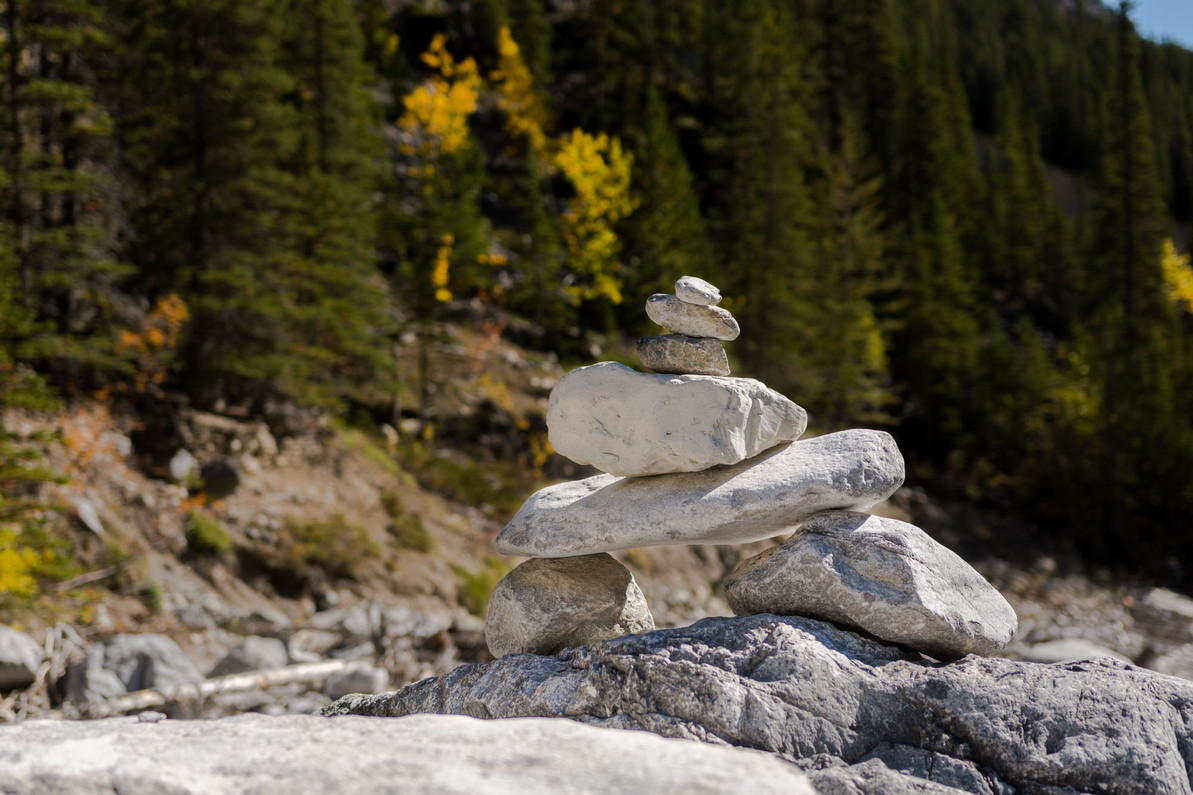The Impact of Stacking Stones
Perhaps you’ve seen towers of rocks and stones known as cairns along a trail or near a stream bank. Perhaps you’ve even participated in stacking stones as a fun pastime done in nature. Rock cairns are not a modern development, but there are modern day concerns with this popular activity.
Historically, these human-made collections of rocks have been used by cultures around the globe for a variety of reasons. Some cairns are placed as a memorial or indication of a burial site, some are used to mark trails or as directional signs, and some to indicate a special place for the indigenous people, like a ceremonial site.
Archeologists say that the locations for these historic cairns are carefully selected and usually signify something that is linked to the cultural or religious practices of the people who built these. The meaning of these when found may not be clear to the modern day wanderer.
The name cairn is Gaelic for “heap of stones.” Around the world, many of these cairns are centuries old. These sculpture-like markers are strong enough to withstand weather and the ravages of time. Some examples of these used as a navigational aid include those found in Scotland, the Andes mountains and in Mongolia.
Some national and state parks and trails have used more modern version of the cairns to guide hikers along the correct path. Acadia National Park, for example, eliminated the older designed cairn trail markers, only to return to these as a nod to the park’s early history.
Whether historic or used by a park to direct hikers along a trail, building a cairn just for the heck of it or to snap a photo for social media is raising the concern for environmentalists. One argument is that modern and random stacks of stone can confuse a hiker, possibly getting someone lost in an unfamiliar part of the park or wilderness area.
These stacks can also disturb wildlife when stones are gathered from the ground or streams and when the stacks collapse. Bugs, reptiles, and small mammals live under rocks. Moving a rock or stone simply to stack it on top of another can also disturb plant life growing on, near, or around the rock. And, depending on the terrain, soil for plant life may be a precious commodity. Removing rocks can also worsen erosion.
According to the National Park Service, the building of these rock stacks is a violation of the naturalists’ motto to leave no trace. As defined, Leave No Trace is made up of seven principles – prepare and plan ahead, travel and camp on durable surfaces, dispose of waste properly, leave what you find, minimize campfire impacts, respect wildlife, and be considerate of others.
It can also be considered illegal. Just as rules apply to the collection of firewood, foraging for food, or picking or removing plants from federal lands, disturbing the environment to stack stones is a violation of these rules, according to the interpretation of some naturalists.
Here are some rules regarding cairns.
Do not tamper with cairns, especially if these are built for specific purpose, such as trail marking or if these may be historically important.
Do not build unauthorized cairns.
Do not add to existing cairns.
As with all trends, the consequences an activity has on the environment is not always known. National parks and wildlife areas are not just places for people to have fun; these places are also home to many species of animals, insects, and plant life. Disturbing anything in this natural environment can be detrimental to the enjoyment of these important sites for future generations.
Recent Posts
-
How To Keep RV Furniture From Peeling
Peeling RV Furniture | Why it Peels and How to Stop it Your RV furniture is a point of pride on …Apr 23rd 2024 -
4 Tips for Securing RV Furniture While Traveling | RecPro
How To Secure RV Furniture There are few things that beat going out on an adventure with an RV …Apr 11th 2024 -
Can You Put Regular Furniture in an RV?
Can you put regular furniture in an RV? Many new and old RV owners ask themselves this qu …Apr 8th 2024 -
Are RV Electric Fireplaces Safe
Being Safe in Your RV with an Electric Fireplace Safety is always going to be one of your highest …Apr 4th 2024 -
How To Install An RV Fireplace
A Warm Addition to Your On-Wheels: The DIY RV Fireplace Installation Guide Many RV enthusiasts ask …Apr 1st 2024 -
Essential Grilling Gear Every RVer Needs
Whether or not you consider yourself a pitmaster or grillmaster, if you’re out on the road with y …Mar 18th 2024







